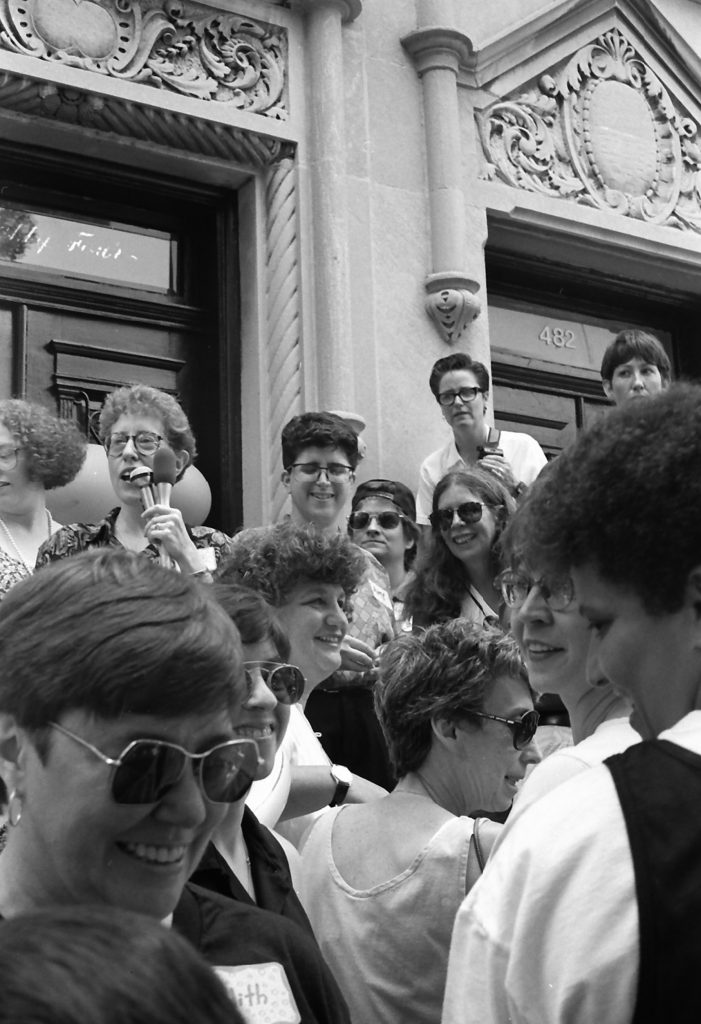Our Herstory
We founded The Lesbian Herstory Archives in the 1970s when a group of women involved in the Gay Academic Union realized that Lesbian history was “disappearing as quickly as it was being made.” Our mission is to gather and preserve records of Lesbian lives and activities so that future generations will have ready access to materials relevant to their lives.
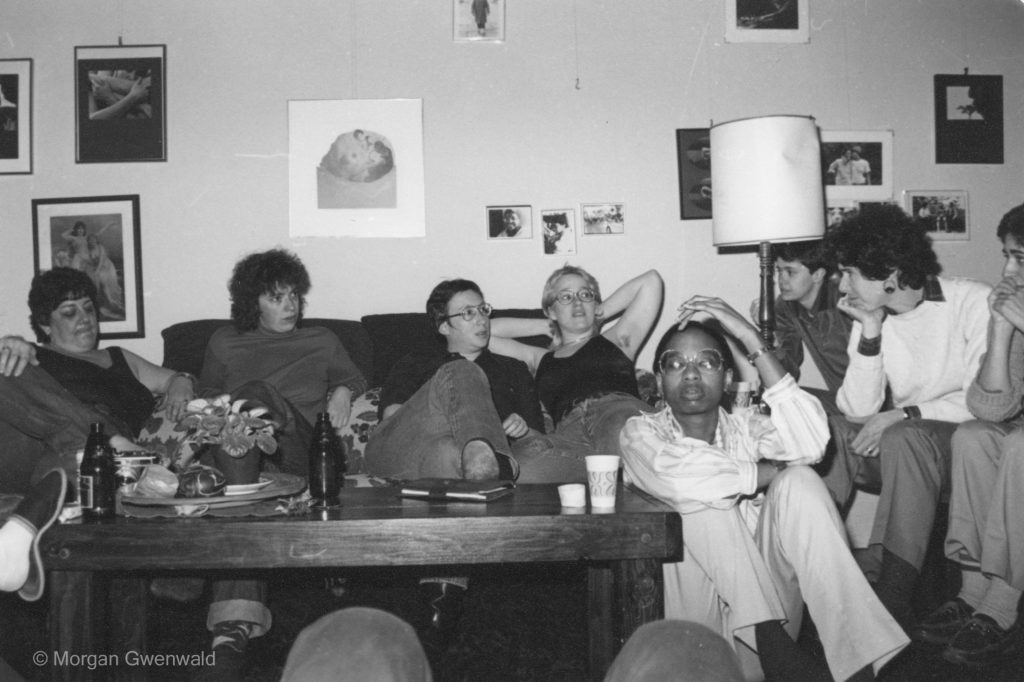
The Gay Academic Union
In 1972, a group of mostly gay women and men who worked or had been educated in the City University of New York and had participated in the liberation movements of the 1960s, founded the Gay Academic Union (GAU). Joan Nestle was part of this group. Dedicated to representing the concerns of Lesbian and gay students, teachers and workers, GAU also launched projects to ensure gay inclusion in course content. At the first conference of the organization, a bomb threat emptied the auditorium, but the conference continued.
As was common in the early 1970s, after a year of working together, several of the women decided they needed a separate meeting space to discuss sexism in the organization, among other things. Two consciousness-raising groups were formed and one of them, which included Joan Nestle and Deborah Edel, became the founding site of the Lesbian Herstory Archives. At one meeting in 1974, Julia Stanley and Joan Nestle, who had come out before the Gay Liberation Movement, talked about the precariousness of Lesbian culture and how so much of our past culture was seen only through patriarchal eyes. Deborah Edel, Sahli Cavallaro and Pamela Oline, with histories ranging from Lesbian-Feminism to political Lesbianism, joined in and, thus, a new concept was born—a grassroots Lesbian archives.
Shared Community Vision
Later in 1974, a larger group of women started meeting on a regular basis to work out the deeper vision of this undertaking. One of the first tasks the group undertook was to send off a news release to all of the then existing Lesbian, Feminist and gay publications announcing the groundbreaking undertaking. This was a testing of the waters, to see if the community shared in our vision. The answer was yes, and in the next year, 1975, LHA published its first free newsletter.
Photo: Joan Nestle, Deborah Edel and other women at an Archives event. Photo by Morgan Gwenwald.
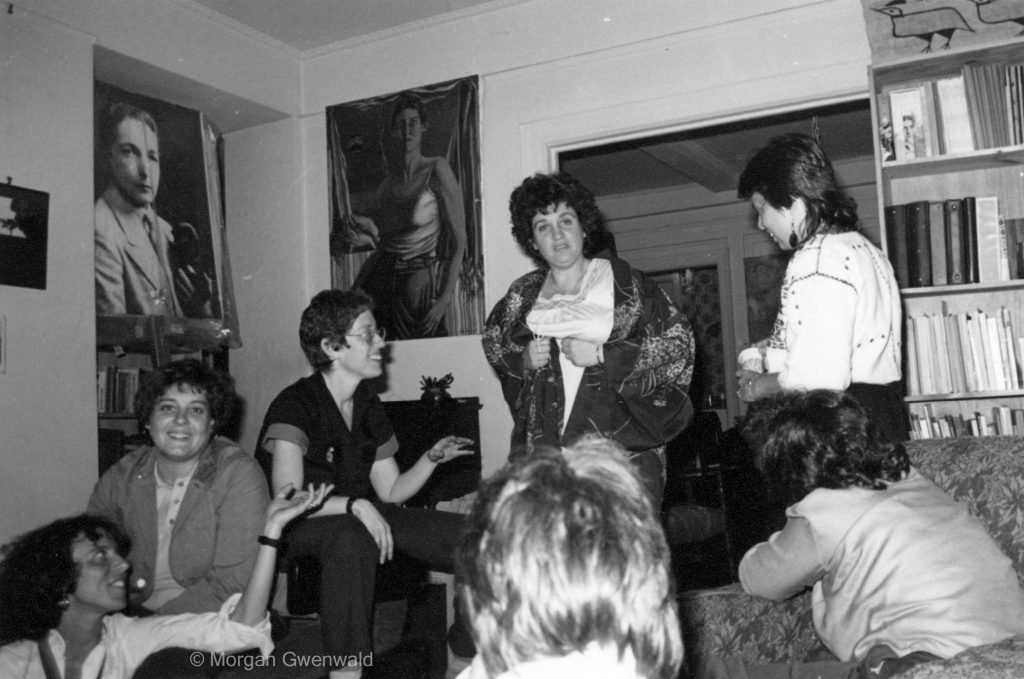
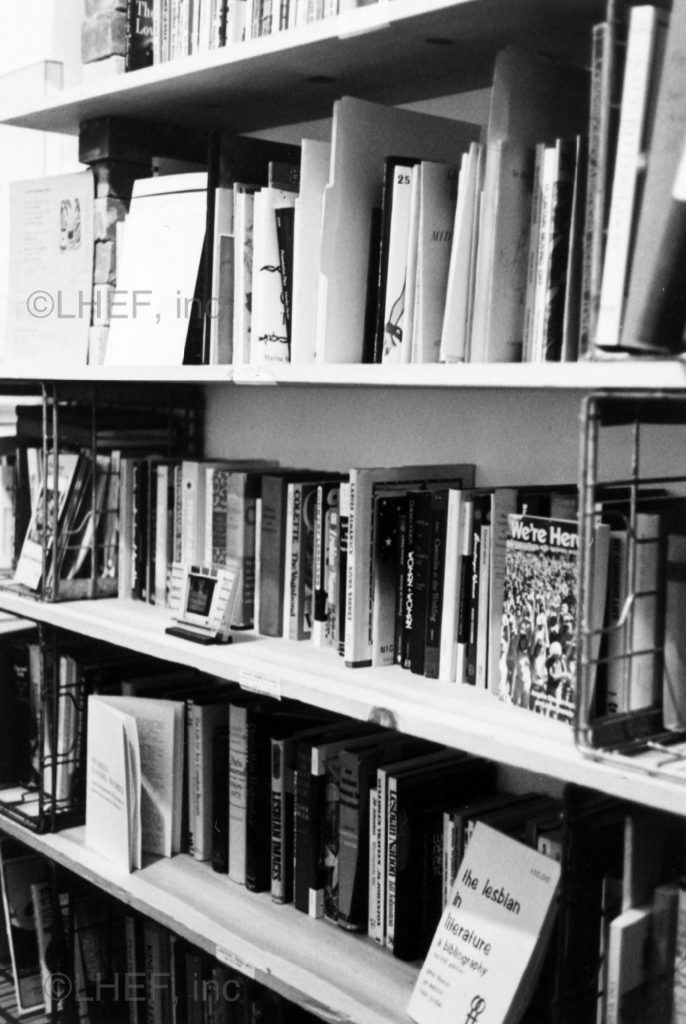
Finding a New Home
In the same year, the Archives found its home for the next fifteen years in Joan Nestle’s Upper West Side Manhattan apartment on 92nd St. Deborah Edel and Joan shared these years with the Archives in this home. And so did thousands of volunteers and visitors. Deb and Joan agreed that the first ten years of the Archives would be to build the trust of the communities it was serving. They were determined to keep all the services of the Archives free, to not seek government funding, and to build grassroots support for the project. To accomplish this, Deb and Joan had carried around early journal issues, photographs, letters, and so on, in shopping bags, speaking to whoever invited them. The venues ranged from living rooms where all present were sworn to secrecy, to women’s festivals, gay church and synagogue gatherings, classrooms and bars.
Judith Schwarz
In 1978, Judith Schwarz, a pioneering grassroots Lesbian historian, joined the collective, bringing with her all her skills in information organizing. Georgia Brooks, a tireless activist in the New Jersey and New York communities, also joined. Georgia launched the first Black Lesbian studies group at the Archives, which held its meetings around the famous French peasant dining room table that we bought for $30 on Atlantic Avenue in Brooklyn in 1973. It is now back in Brooklyn in our permanent home.
Photo: Valerie Itnyre, Georgia Brooks, Deborah Edel, Judith Schwarz, and Joan Nestle at an Archive’s collective meeting.
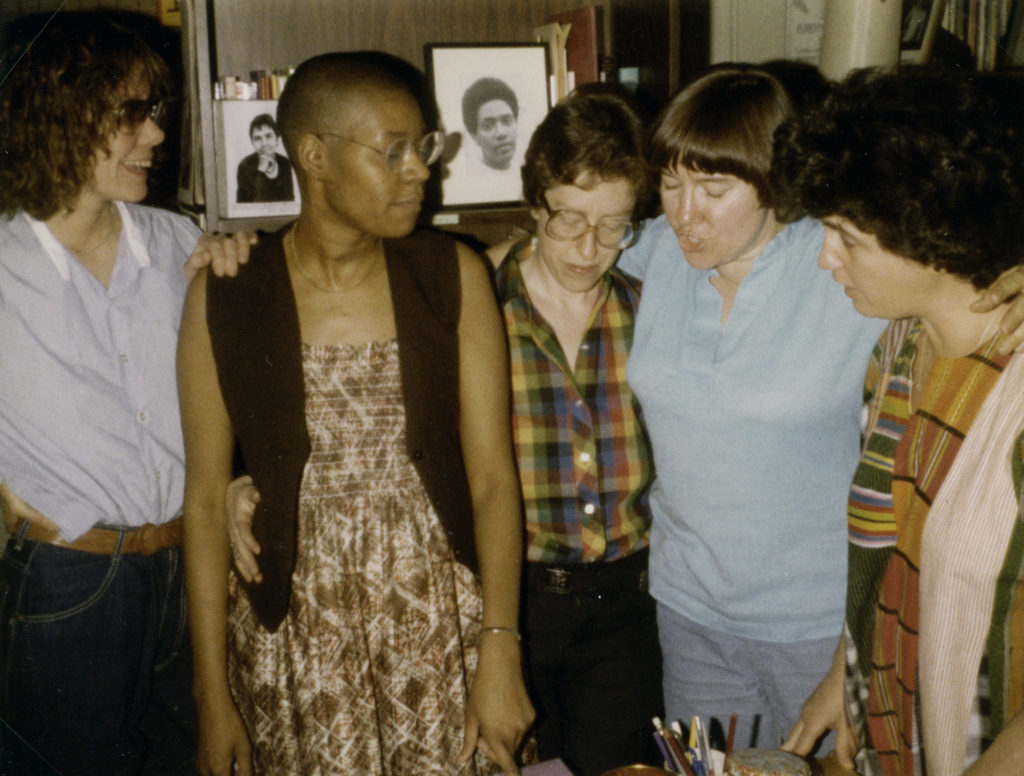
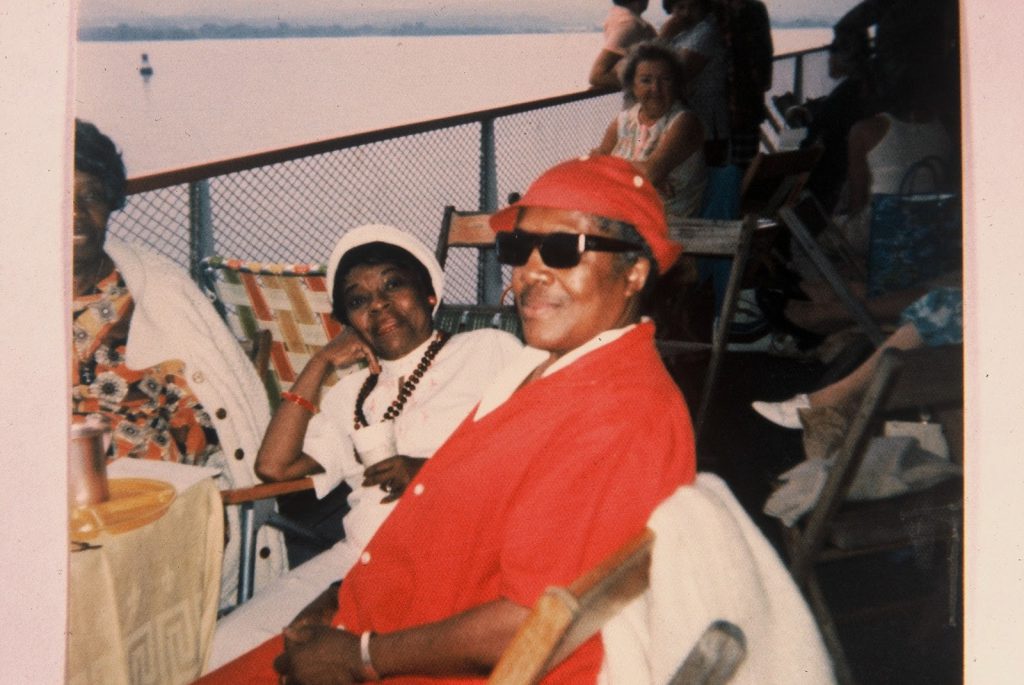
Mabel Hampton
One other person closely connected with the Archives until her death was Mabel Hampton (1902–1989), a woman who had lived her long life in the African American Lesbian community. Mabel donated her extensive collection of 1950s Lesbian paperbacks and often came to volunteer nights. From the earliest days of the Archives, one night a week was devoted to volunteers working with the collection—groups of very different women spread out over the whole apartment filing, sorting, cataloguing, and opening mail. Many women came to volunteer nights just to hear Mabel tell her tales of drag balls in Harlem and her version of the wild parties of the Harlem Renaissance.
Photo: Lillian Foster and Mabel Hampton on Hudson River Boat Trip with their Lesbian Community, c. 1971.
A Newer Home
In the mid-1980s when we realized we needed to find a larger home for the Archives and to spread the responsibility for the now huge collection, we created a coordinating committee that spearheaded a concerted fundraising drive so we could purchase a building for the collection. We purchased our new home in Park Slope, Brooklyn, in 1992 and officially opened it in June 1993. The bank was dubious about taking a risk on our non-hierarchical collective with no guaranteed source of income, but we raised the money to pay back the bank in record time. That trust we had talked about building in 1974 was there when we—all of us—needed it. Thank you.
Photo: Happy archives coordinators gathering for the opening of the new location in Park Slope, Brooklyn. Photo by Saskia Scheffer, 1993.
